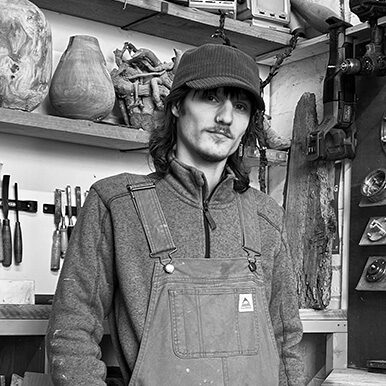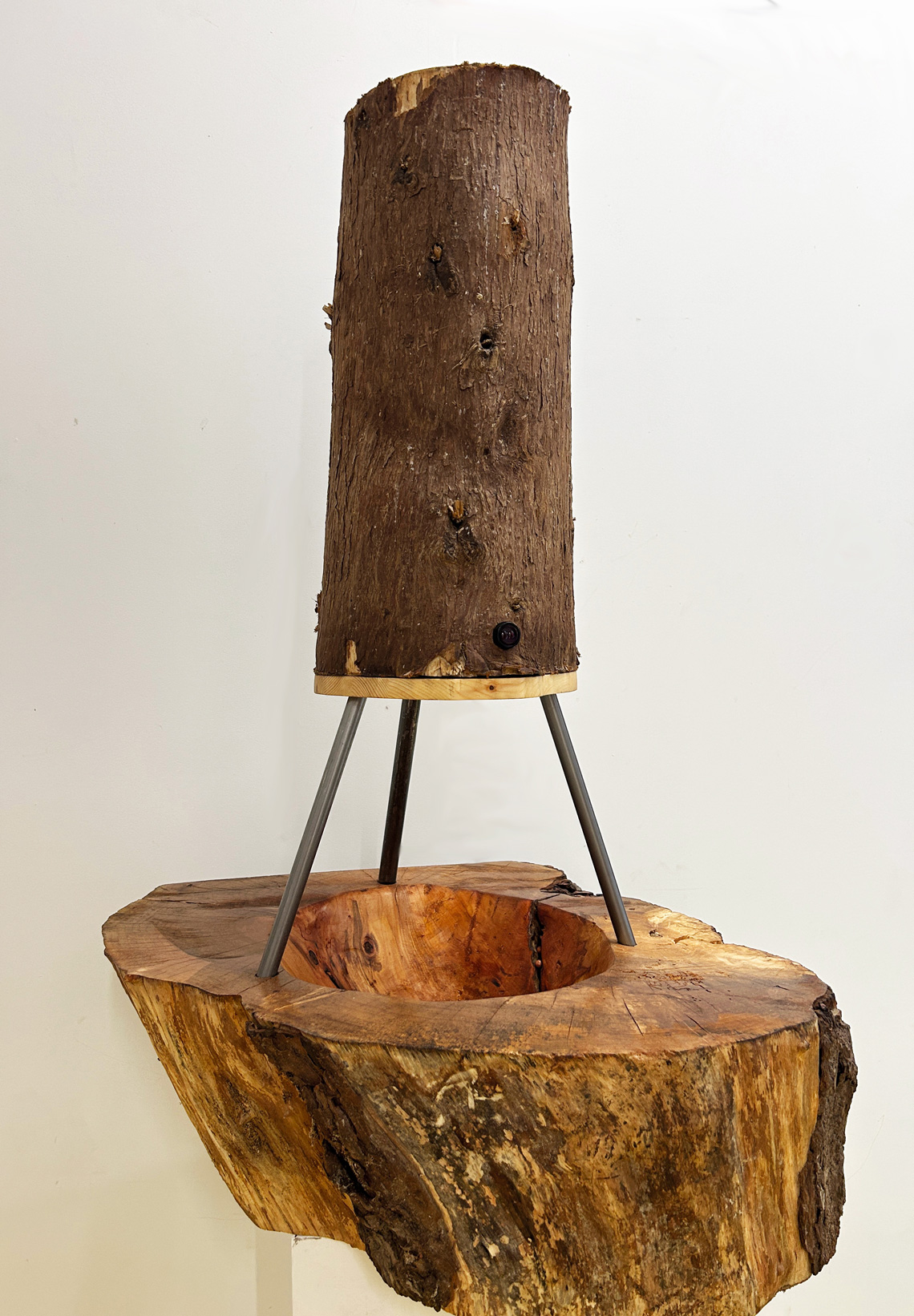
Archie Brooks
Archie Brooks is a Leeds-based artist whose work explores the intersection of organic materials and kinetic motion. Using wood and mechanized movement, his sculptures challenge perceptions of rhythm, repetition, and human connection to natural cycles. His works react to audience presence, incorporating live video feeds and motion-sensing elements to explore themes of surveillance, visibility, and self-awareness. Often shifting between revealing and concealing the viewer, his sculptures create a dynamic interplay between control and chance. By merging traditional materials with movement, Brooks highlights the tension between organic life and mechanized systems, offering a thought-provoking meditation on impermanence, futility, and the rhythms that define human existence and the environment we inhabit.


Archie Brooks
Archie Brooks is a Leeds-based artist whose work explores the intersection of organic materials and kinetic motion. Using wood and mechanized movement, his sculptures challenge perceptions of rhythm, repetition, and human connection to natural cycles. His works react to audience presence, incorporating live video feeds and motion-sensing elements to explore themes of surveillance, visibility, and self-awareness. Often shifting between revealing and concealing the viewer, his sculptures create a dynamic interplay between control and chance. By merging traditional materials with movement, Brooks highlights the tension between organic life and mechanized systems, offering a thought-provoking meditation on impermanence, futility, and the rhythms that define human existence and the environment we inhabit.
The Measure Of Passing
Cedar wood, Mechanical components, Variety of wooden beads
100cm x 60cm x 60cm
Time is invisible, yet it leaves traces. The Measure of Passing captures these fleeting moments, transforming them into something tangible. Suspended above a grounded stump, a second vessel holds hundreds of delicate wooden beads—small markers of time, waiting to fall. As a viewer walks past, their presence triggers the release of a single bead. It drops, a quiet punctuation in time, joining the others that have fallen before it. With each movement, a new mark is made, a fleeting moment made physical. Over time, the lower bowl fills—a growing archive of presence, a silent testament to those who have passed by, lingered, or simply moved through the space.
Each bead is a record, a footprint of time embodied. As viewers witness the accumulation, they are confronted with a realisation: time is shaped by those who pass through it. Every visitor leaves something behind, adding to the piece, connecting past and present in a quiet yet profound exchange. In The Measure of Passing, time is not just observed—it is collected, felt, and remembered.

